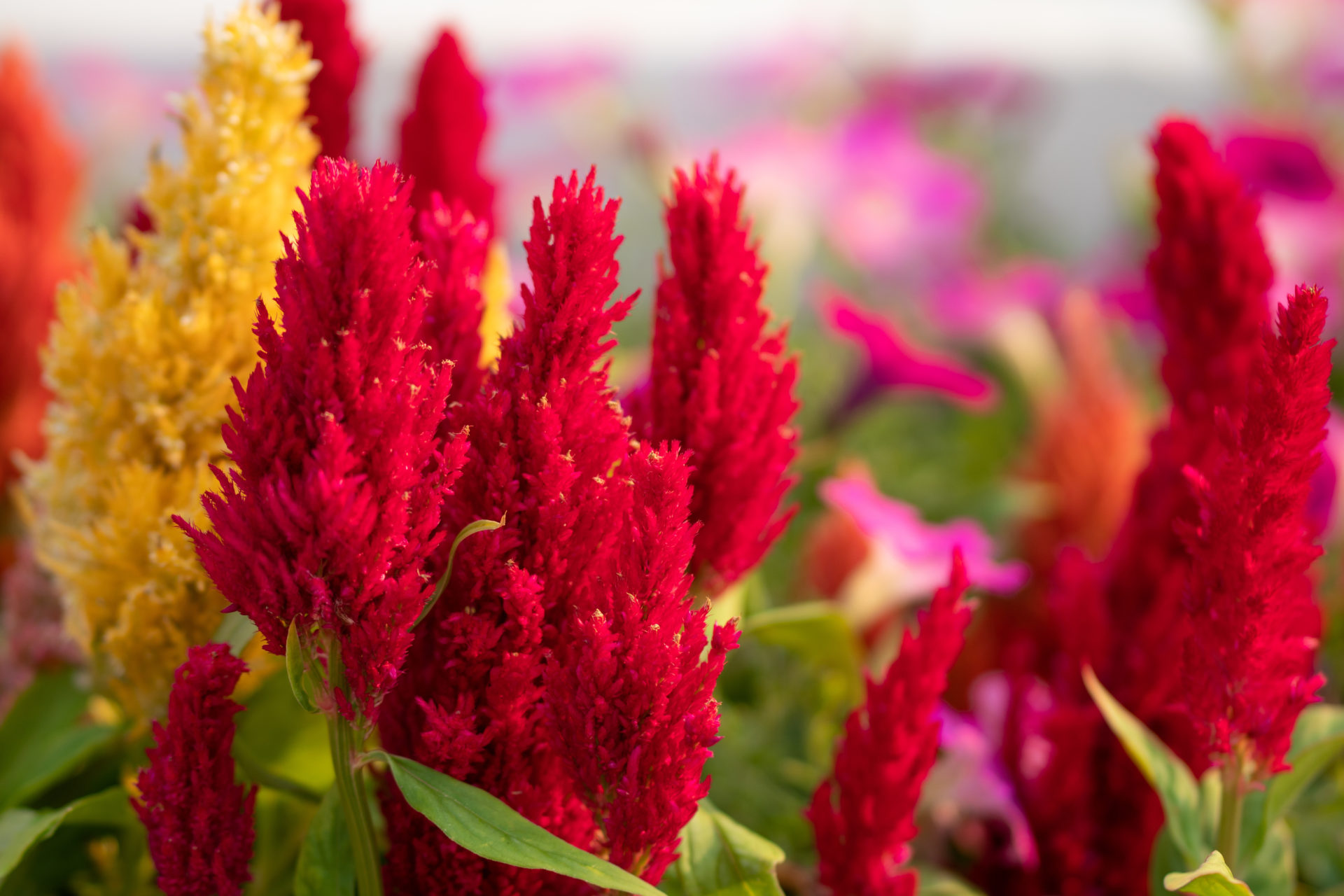
Fall brings pumpkins and gourds as well as familiar and well-loved annuals to decorate our porches and planters. Mums, pansies, purple fountain grass and ornamental cabbage and kale regularly feature as the temperatures cool, and rightly so, as they bring seasonal color in abundance. In addition to these colorful annuals, there are a number of plants, both annual and perennial, that can add an interesting twist to autumnal plantings.
Millet (Pennisetum glaucum)
This is a dramatic grass that makes a greater “thriller” component in containers. While millet is an ancient grain crop, having been farmed in Africa and Asia since prehistoric times, the plants we see in our garden centers have been bred to feature ornamental qualities. Thus, they are compact at 18-24” tall, and sport colorful deep purple or lime green leaves, all topped with a number of fuzzy brown flower spikes about 8” long.
Carex flagellifera ‘Toffee Twist’
This tender perennial grass from New Zealand has narrow leaves and makes a great “filler/spiller” with its warm, toffee brown foliage. Given the right conditions it is capable of reaching 18” tall, but usually does not reach such heights in the north-east. While it is not winter hardy in New England, it is happy in the cool temperatures of fall and provides a textural foil to flowers such as pansies, petunias and calibrachoa.
Swiss Chard (Beta vulgaris var. cicla)
This colorful vegetable also does double duty as a component of fall containers. Related to beetroot, Swiss chard does not produce an edible root, but instead is cultivated for its stems and leaves. Large rippled leaves of dark green are supported on brightly colored stalks of red, orange and yellow, all of which nicely compliment annuals such as celosia and ornamental peppers.
Ornamental Peppers (Capsicum annum)
Ornamental peppers come in various shapes and colors – both in fruit and leaves. Whether finger-like, round or cone-shaped, varieties of this versatile annual produce fruits in shades of yellow, orange, red and purple/black. Many varieties have green foliage, but certain cultivars also have dark purple leaves, which set off the fruit in dramatic fashion. And in case you are wondering, the peppers are edible, but the taste is either bland or extremely hot as they have been bred for looks not flavor.
Cockscomb (Celosia spp.)
Celosia is part of the amaranth family and as such its young leaves are edible with a taste similar to spinach. However, it is its colorful flowers that are the main attraction, although foliage can also add an extra pop of color. Celosia flowers come in three forms: plumed, wheat and cockscomb, which looks like coral or brains, and are found in shades of yellow, orange, red and purple. Popular with bees, these annuals also make a great “thriller” component to containers.
Coral Bells (Heuchera)
While readily available throughout the growing season as an attractive shade-loving perennial in New England, this colorful foliage plant is an excellent ”filler” for fall containers. As the days are shorter and the light not so strong, coral bells are more tolerant of being used in locations that normally would not be considered. Plus the bonus is that, once you wish to switch over from fall to winter decor, coral bells can be planted in a shady location in gardens to return year after year.
Daisies
Daisies in their broadest sense, also feature strongly in fall plantings. Whether it is compact annual sunflowers such as Suncredible® Yellow Sunflower, which offer multiple small sunflowers over many weeks on a plant reaching 36” tall, or Montauk daisies, an October blooming perennial with white flowers, to asters, a native perennial with multiple small flowers in shades of pink, blue and purple, there is a daisy for every taste.
These are just a selection of plants that can be used for fall plantings. These and many others can be found at our garden centers, just awaiting your creative flair!
Sources:
https://extension.umn.edu/flowers/celosia
https://plants.ces.ncsu.edu/plants/carex-flagellifera-toffee-twist/









